Please feel free to comment and/or add more information here. Google+
A BLOG FOR STUDENTS STUDYING THE ACCESS TO HISTORY COURSE IN FURTHER EDUCATION.
Thursday 24 April 2014
THE HISTORY LEARNING SITE
Very good discussion on the terms of Versailles and its consequences. Also a good discussion regarding the other Treaties signed during this period that involved Germany's allies and the consequences.
http://www.historylearningsite.co.uk/treaty_of_versailles.htm
Please feel free to comment and/or add more information here. Google+
http://www.historylearningsite.co.uk/treaty_of_versailles.htm
Please feel free to comment and/or add more information here. Google+
HITLER DURING THE GREAT WAR

Hitler as a Soldier in World War I
- Although Hitler attempted to avoid Austrian military service by moving to Munich, Germany in May 1913, Hitler volunteered to serve in the German army once World War I began.
- Hitler endured and survived four years of World War I. During this time, he was awarded two Iron Crosses for bravery.
- Hitler sustained two major injuries during the war. The first occurred in October 1916 when he was wounded by a grenade splinter. The other was on October 13, 1918, when a gas attack caused Hitler to go temporarily blind.
- It was while Hitler was recovering from the gas attack that the armistice (i.e. the end of the fighting) was announced. Hitler was furious that Germany had surrendered and felt strongly that Germany had been "stabbed in the back" by its leaders.
From About.com twentieth century history
Please feel free to comment and/or add more information here. Google+
Wednesday 23 April 2014
WEDNESDAY'S LESSON - THE TREATY OF VERSAILLES. INTERESTING ARTICLE FROM THE GUARDIAN
Antagonists face to face
How the terms were presented
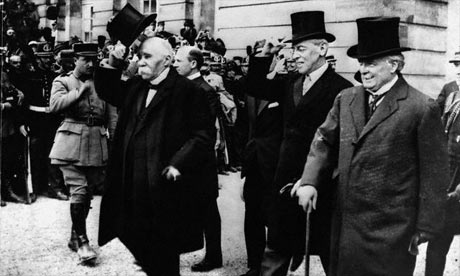
Allied leaders at Versailles. Photograph: Corbis
The first step in the final stage of the establishment of an enduring peace was taken this afternoon in the Trianon Palace hotel at Versailles. For the first time Allied and enemy plenipotentiaries were face to face; those who had the privilege of witnessing the memorable scene could not avoid associating the proceedings in the dining hall of the palace with those of a court of justice.
Round the room sat representatives of an outraged world. The German plenipotentiaries facing them occupied seats at a little table at the bottom of the hall, placed there in the manner of those called upon to answer an indictment.
There was throughout a certain tension. One was acutely conscious of antagonists brought face to face, although there was no attempt on the part of the Allies to emphasise this. They extended to Germany's representatives in every particular "the courtesy of privileged nationals" - yet the impression of adversaries was distinctly there. One heard it in the clearcut, precise tones of the president, France's veteran statesman. Monsieur Clemenceau, in his opening words, struck the note of the afternoon: "The time has come when we must settle our account. You have asked for peace. We are ready to give you peace."
Contrasting with the president's clear, articulate voice was the guttural baritone of Count von Brockdorff-Rantzau, who throughout his long statement conveyed the feeling of a certain emotional strain. In the main we seemed to be hearing a desperate plea for leniency from one not accustomed to speak in such terms, but at times the tone seemed to change suddenly, and the count became accusative, protesting that not Germany alone was guilty.
The Draft Treaty of Peace now handed to the Germans is designed to set forth the conditions upon which alone the Allied and associated powers will make peace with Germany, and to establish those international arrangements which the allies have devised for the prevention of wars in the future and the betterment of mankind.
The Draft Treaty, however, does not deal, except incidentally, with the problems arising out of the liquidation of the Austrian empire, nor with the territories of two enemy powers, Turkey and Bulgaria.
The official summary of the Preliminary Treaty of Peace includes the following terms:
• Germany is to acknowledge responsibility for causing all the war loss and damage suffered by the Allies. As an immediate step, Germany is to pay within two years £1,000,000,000 in either gold, goods, ships or other forms of payment.
• Bond issues "are presently to be required of Germany in acknowledgment of her debt" of £3,000,000,000 sterling, bearing 2½% interest between 1921 and 1926; and an undertaking to deliver an additional amount of £2,000,000,000 sterling, bearing interest at 5%, under terms to be fixed by the commission.
• In addition, Germany is to bind herself to repay all Belgium's war debt to the Allies. The total of the war loans to Belgium up to the date of the armistice is not given, but it is understood to be over £200,000,000.
• Germany is to abolish compulsory military service, to limit her army to 100,000, and to limit her production of war material.
• The Dutch government are to be asked to surrender the ex-kaiser, and a special tribunal composed of one judge from each of the five great powers are to try him for "a supreme offence against International Morality and the Sanctity of Treaties." Military tribunals are to try other war criminals.
• Alsace-Lorraine returns to France.
•Extract from the Manchester Guardian, May 8 1919
A warning from John Maynard Keynes
Moved by insane delusion and reckless self-regard, the German people overturned the foundations on which we all lived and built. But the spokesmen of the French and British peoples have run the risk of completing the ruin, by a peace which, if it is carried into effect, must impair yet further, when it might have restored, the delicate, complicated organisation through which alone the European peoples can employ themselves and live.
In this lies the destructive significance of the Peace of Paris. If the European civil war is to end with France and Italy abusing their momentary victorious power to destroy Germany and Austria-Hungary now prostrate, they invite their own destruction also, being so deeply and inextricably intertwined with their victims by hidden psychic and economic bonds.
• The economist John Maynard Keynes represented the Treasury at Versailles. In his book The Economic Consequences of the Peace (1919), he correctly forecast it would lead to economic disaster.
Letter of complaint by the leader of the German delegation
We came to Versailles in the expectation of receiving a peace proposal based on the agreed principles. We were firmly resolved to do everything in our power with a view of fulfilling the grave obligations which we had undertaken. We hoped for the peace of justice which had been promised to us.
We were aghast when we read in documents the demands made upon us, the victorious violence of our enemies. The more deeply we penetrate into the spirit of this treaty, the more convinced we become of the impossibility of carrying it out. The exactions of this treaty are more than the German people can bear.
Although the exaction of the cost of the war has been expressly renounced, yet Germany, thus cut in pieces and weakened, must declare herself ready in principle to bear all the war expenses of her enemies, which would exceed many times over the total amount of German state and private assets. Meanwhile her enemies demand, in excess of the agreed conditions, reparation for damage suffered by their civil population. No limit is fixed, save the capacity of the German people for payment.
The reconstruction of our economic life is at the same time rendered impossible. We must surrender our merchant fleet. We are to renounce all foreign securities. We must thus renounce the realisation of all our aims in the spheres of politics, economics, and ideas.
The German people are excluded from the League of Nations, to which is entrusted all work of common interest to the world. Thus must a whole people sign the decree for its proscription - nay, its own death sentence.
• Extract from a formal letter of complaint sent by Count von Brockdorff-Rantzau to the conference president, Georges Clemenceau

Please feel free to comment and/or add more information here. Google+
Tuesday 22 April 2014
WEDNESDAY'S LESSON - THE LEGACY - INTERESTING ARTICLE FROM THE GUARDIAN
First world war: 15 legacies still with us today
- The Guardian, Süddeutsche Zeitung, El Paîs, La Stampa, Gazeta Wyborcza and Le Monde
- theguardian.com,
- Jump to comments (639)
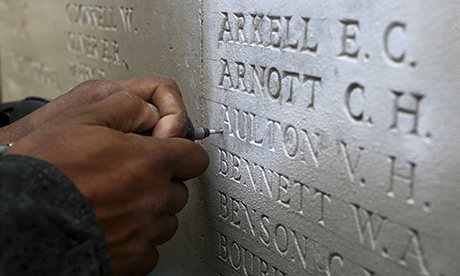
A stone mason restores names listed on the memorial wall at the VC Corner Australian Cemetery and Memorial, Fromelles, France. Photograph: Chris Radburn/PA
Poisonous gas
The experiment began on 22 April 1915. German soldiers, entrenched in the Belgian medieval town of Ypres, attacked with 6,000 steel canisters of chlorine gas. The wind carried the lethal gas, which was two-and-a-half times heavier than air, across to the British enemies, over a front that ran along some four miles. The gas caught the British soldiers unaware, killing 3,000 of them. In no time all of the sides in the war started to set off their own gas attacks: it wafted over battlefields, made it over exclusion zones and wounded more than a million people, killing 70,000.
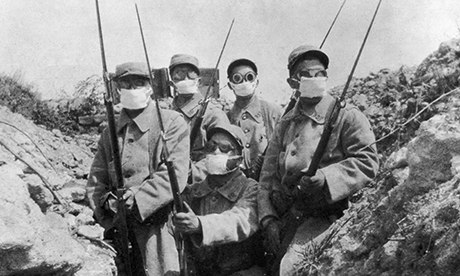
One of the characteristics of poisonous gas, which was banned under international law as a chemical weapon in 1925, is its barbarity. On 10 July 1917 German troops shot blue cross (diphenylchloroarsine) shells, whose ingredients combined to cause victims to sneeze violently, penetrating their gas masks. These were duly called "mask breakers".
The second characteristic is the indiscrimination with which the gas killed. It is impossible to exactly pinpoint this. Whether they were soldiers, citizens or children, each were killed in the same way.
Ronen Steinke, Süddeutsche Zeitung
Ronen Steinke, Süddeutsche Zeitung
Shell shock and PTSD
Psychological victims of war are as old as war itself. Deuteronomy, the Greeks and Shakespeare all tell us this. But it wasn't until the first world war that science began to understand this properly and essay the kind of diagnoses that are familiar to us today. Even during the war, some medics still thought that "shell shock" or "war neurosis", as it was known, was down to the physical impact of exploding military ordnance.
But slowly another theory began to form: that the peculiar symptoms exhibited by huge numbers of soldiers (80,000 in the British army alone) was borne of emotional, not physical, stressors – in particular, the almost suicidal nature of the frontline campaign, the close proximity to death, the hideous sight of watching a friend – or enemy – meet a particularly gruesome end.
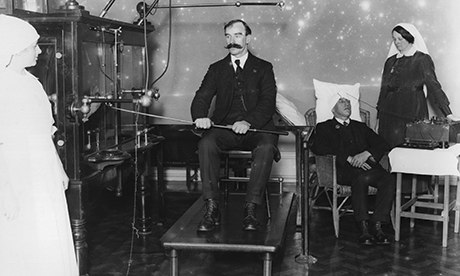
Traumatised soldiers shared many common symptoms – from speech difficulties, twitches, anxiety and digestive disorders to more comprehensive nervous indispositions. Doctors found it baffling that these symptoms would often not present until the patient was back in the safe confines of civilian life and why they would persist long after the war was finished.
The vast majority of men did not recover sufficiently to return to the army or the front. Siegfried Sassoon did, but not before he'd written the poem, Survivors:
"No doubt they'll soon get well; the shock and strain
Have caused their stammering, disconnected talk.
Of course they're 'longing to go out again', –
These boys with old, scared faces, learning to walk.
They'll soon forget their haunted nights; their cowed
Subjection to the ghosts of friends who died, –
Their dreams that drip with murder; and they'll be proud
Of glorious war that shatter'd their pride …
Have caused their stammering, disconnected talk.
Of course they're 'longing to go out again', –
These boys with old, scared faces, learning to walk.
They'll soon forget their haunted nights; their cowed
Subjection to the ghosts of friends who died, –
Their dreams that drip with murder; and they'll be proud
Of glorious war that shatter'd their pride …
Men who went out to battle, grim and glad;
Children, with eyes that hate you, broken and mad."
Children, with eyes that hate you, broken and mad."
Despite the sudden insights of the first world war, and countless more sufferers in the second world war, it wasn't until 1980 and the aftermath of the Vietnam war that this condition was formally recognised as post-traumatic stress disorder.
Mark Rice-Oxley, the Guardian
Mark Rice-Oxley, the Guardian
Conscription
"Your Country Needs YOU!", the famous poster featuring Britain's secretary of state for war, Lord Kitchener, encouraged more than a million men to enlist to bolster the original expeditionary force deployed to France hopelessly unprepared and unfit for a European war. Within a year of Britain declaring war on Germany in August 1914, despite the numbers of enthusiastic young men who joined up (often with their friends and neighbours in what became known as "Pals" battalions) such was the rate of casualties it was clear the country could not continue to fight by relying solely on volunteers.
For the first time in British history early in 1916 the government introduced conscription. Unlike in many continental powers – including France, Germany, Russia, Austria and Hungary, where compulsory enlistment in different forms had existed for many years, in Britain there was no tradition that citizenship carried military obligations, according to Sir Hew Strachan, Oxford University's professor of the history of War. Strachan made the point in his book, The First World War, that the principle of universal military service was introduced in Britain without the adoption of universal adult male suffrage – Britain had the most limited franchise at the time of any European state bar Hungary.
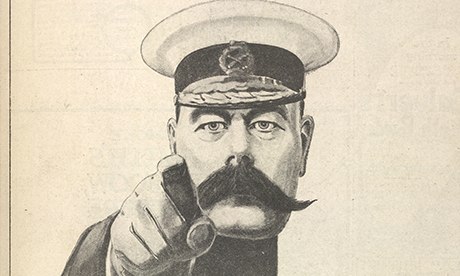
Britain's Military Service Act was passed by parliament in January 1916. It imposed conscription on all single men aged between 18 and 41. The medically unfit, clergymen, teachers and workers employed in key industries were exempt. Conscription was extended to married men in May 1916, and during the last months of the war in 1918, to men up to the age of 51. Conscription raised about 2.5 million men during the war.
Protests against conscription included a demonstration by 200,000 people in Trafalgar Square. Tribunals were set up to hear demands for exemption, including from conscientious objectors. However, the principle of objecting to military service on moral grounds was widely accepted and, in most cases, objectors were given civilian jobs.
The tribunals' main task was ensuring that men not sent to the battlefields were productively employed at home. As the war went on and more men were sent to fight, the shortage of skilled workers in arms factories became more acute. Late in 1917 the German Reichstag passed a law obliging all available males between 17 to 60 to work in arms factories.
An attempt in 1918 to force conscription on Ireland was strongly opposed by trade unions, nationalists and the Roman Catholic hierarchy. It was abandoned and served only to increase support for an independent Ireland (though more than 200,000 Irishmen – Catholic and Protestant – volunteered to serve in the British army).
Canada introduced conscription in its "khaki election" in 1917, the year the US president, Woodrow Wilson, also did so, arguing, Strachan notes, "that it was the most democratic form of military enlistment".
Richard Norton-Taylor, the Guardian
Richard Norton-Taylor, the Guardian
War technology
The war that was supposed to be the one to end all wars was in fact the beginning of all modern conflicts, the origin of the "storm of steel", as described by German officer Ernst Jünger in his memoir of trench warfare.
With the first world war, the technical revolution reached the battlefields and forever changed the way that armies fought. Technology became an essential element in the art of war. It could be argued that it had already been so throughout history (Could the Spanish colonisation of the Americas have taken place without gunpowder? Could Rome have conquered the known world without the superior organisation of its military forces?). However, technology never became so important, and above all, so destructive, although it took many battles and casualties to recognise it.
In Adam Hochschild's essay about the conflict, To End All Wars, he describes how these novelties came upon the battlefields; the submarine and aerial bombardment of civilians, armoured tanks (which weighed 28 tonnes and advanced at the rate of two miles an hour), toxic gas attacks … But, on top of that, the most important innovation was the barbed wire fences, the most definitive and unassuming weapon used, that held the war back to the trenches.
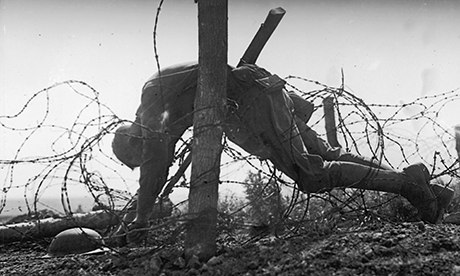
Douglas Haig, the much-criticised commander of the British forces in France, wrote of the conflict's end with profound lucidity: "I believe that the value of the horse and the opportunity for the horse in the future are likely to be as great as ever. Aeroplanes and tanks are only accessories to the men and the horse, and I feel sure that as time goes on you will find just as much use for the horse – the well-bred horse – as you have ever done in the past." Like so many other times, he could not be more mistaken.
Guillermo Altares, El Paîs
Guillermo Altares, El Paîs
Pacifism
Bertha von Suttner, who in 1905 became the first woman to be awarded the Nobel peace prize, once jested that humanising the war was like regulating the temperature when boiling someone in oil.
However, when war broke out in Europe, it wasn't just pacifists who were shocked, but many erstwhile war enthusiasts too. (For example, the German writer Kurt Tucholsky had signed up for "drunken nationalism" in the first few days of the war. Now he was disenchantedly calling the war 'a worldwide latrine with blood, barbed wire and hate songs".)
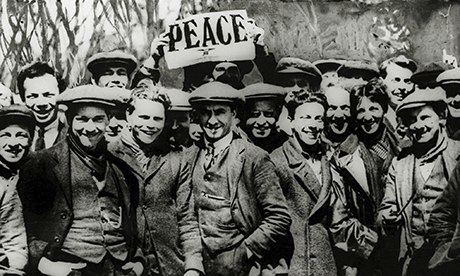
After the war the pacifists had admittedly more influence than before: about 70,000 members belonged to pacifist groups in Germany, which incidentally was comparatively less than the 500,000 members of the soldiers' unions.
Above all though, the war destroyed a part of their primordial self-certainty. Before 1914, the pacifists had dreamed that wars could be contractually banned – it was an unwordly belief, as was shown. Now the peace-lovers strove for a more realistic, modest aim – disarmament, international understanding, reconciliation and a humanisation of war through the abandonment of certain weapons.
Ronen Steinke, Süddeutsche Zeitung
Ronen Steinke, Süddeutsche Zeitung
The Middle East legacy
The first world war and the treaties that followed it redrew the map of the Middle East by creating new states and new political realities on the territory of the defeated Ottoman empire. Rivalry between Britain and France, the growth of Arab nationalism, Zionist ambitions in Palestine and the emergence of modern Turkey all changed the face of the region. It is one of history's neater ironies that lines that were drawn in the wartime sand are starting to blur a century later.
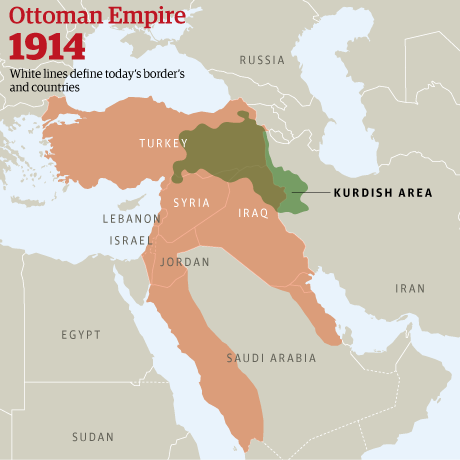
The Sykes-Picot agreement of 1916 secretly divided the former Ottoman lands into British and French zones of influence. The Mandate system created by the interwar League of Nations promised only eventual self-government, not the immediate independence for which Sharif Hussein of Mecca had launched a desert revolt against the Turks – with the help of Colonel TE Lawrence ("of Arabia"). And, in another conflicting pledge, the Balfour Declaration of 1917 gave Britain's support for the creation of a "national home" for the Jews in the holy land – laying the foundations for the emergence of Israel and the world's most intractable contemporary conflict. Historians have been arguing ever since about this tangled diplomacy and its fateful repercussions.
Ethnic, sectarian and tribal differences were of little concern to the colonial-era map-makers. Iraq was formed by merging three Ottoman provinces - dominated respectively by Shias, Sunnis and Kurds. It was also cut off from Kuwait – the genesis of trouble later. Its king was a Hashemite from the Arabian peninsula who had been thrown out of Syria so was the king of neighbouring Jordan, created by a stroke of Winston Churchill's pen after a boozy lunch in Cairo in 1921. Lebanon was split off from "Greater Syria" as a home for the Christians whose support would strengthen French influence.
The biggest losers of the postwar lottery in the Middle East were the Kurds. Nowadays this still stateless people enjoy a high degree of regional autonomy – as well as relative peace – in federal Iraq while their compatriots in Syria control areas that are out of reach of Bashar al-Assad's forces.
The biggest losers of the postwar lottery in the Middle East were the Kurds. Nowadays this still stateless people enjoy a high degree of regional autonomy – as well as relative peace – in federal Iraq while their compatriots in Syria control areas that are out of reach of Bashar al-Assad's forces.
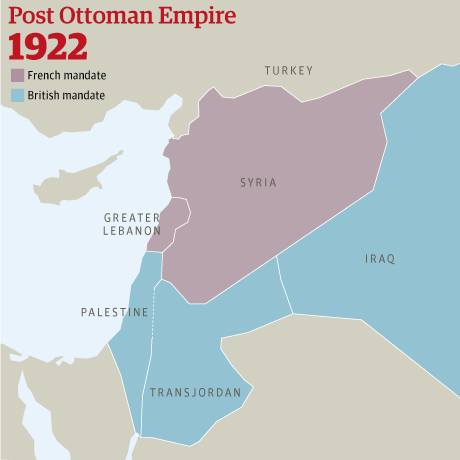
The very idea of Arab nationalism is under threat by sectarian extremists, who look back to Islam to create a new caliphate (abolished by the newly secular Turks in 1922). Assad's enemies include a leading jihadi group with links to al-Qaida. Its Arabic name is "the Islamic State in Iraq and al-Sham (Syria and Lebanon)" – a deliberate erasure of those post-first world war frontiers.
Ian Black, the Guardian
Ian Black, the Guardian
Filmed propaganda
In a conversation with the philosopher Alexander Bogdanov in 1907, Lenin spoke of cinema as "one of the most important means of education of the masses". The first world war was to prove him emphatically right.
At the start of the war, audiences – and governments – were still relatively new to the idea of cinema. But in the US alone, 2,500 films were produced between 1915 and 1918. Many such as Zepped contained an undeniable propaganda slant to them. Others were produced to more subtle effect, such as The Battle of the Somme – a British effort to appeal to US public opinion and draw America into the war. In Italy, Maciste alpino, by Luigi Romano Borgnetto and Luigi Maggi (1916) emphasises the values of battle, pushing the audience to identify with the hero protagonist.
But not all of it was pro-war. In Civilization (1916), Thomas Harper Ince launched his allegorical cry for peace. Abel Gance's J'accuse, with some scenes filmed on real battlefields, is undeniably pacifist.
But the jewel of the period, dated 1918, is the Charlie Chaplin film Shoulder Arms, which illustrates, halfway between tragedy and farce, the horrors of life at the front.
Fulvia Caprara, La Stampa
Fulvia Caprara, La Stampa
Workers of the world
For the European socialist and labour movement , and the nascent trade union movement , the outbreak of the first world war was a terrible shock. Though well organised in countries including Germany, Britain and France, the leadership of socialist and social democrat parties failed to mobilise against the war in the summer of 1914.
The parties and the first trade unions (with the exception of Italy, which maintained its neutrality until May 1915) were co-opted into the war effort and production. For a long time workers in large industries – in particular skilled workers, crucial for the production of machinery and armaments necessary to feed the monstrous battle of materials at the front – were not only exempted from recruitment into the army, but also enjoyed favourable food and wage conditions in return for the banning of strike action.
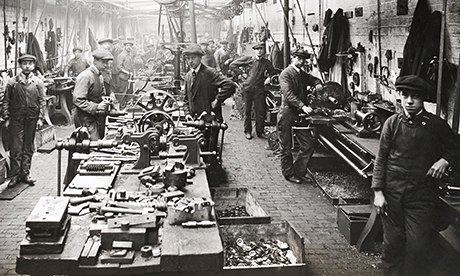
But as the war destroyed lives and resources, living and working conditions for factory workers gradually declined. Socialist minorities began to agitate for a peaceful settlement of the conflict; the Russian year of revolution in 1917 turned the political calculus upside down, reviving radical political parties and trade unions in all the belligerent countries. One of the few things left standing at the end of the war in 1918 was an aggressive, organised, determined European trade union movement about to embark on its heyday.
Roberto Giovannini, La Stampa
Roberto Giovannini, La Stampa
The planned economy
Before the Soviet Union forced a planned economy on half of Europe, the Germans had discovered it. The first legislation limiting economic freedom was implemented on 3 August 1914.
The German state took control over citizens' savings, foreign trade and the production and sale of food. It also set maximum prices for various goods and introduced "raw material associations", which controlled the distribution of raw materials that were in shortage according to the needs of a war economy.
In November 1916, a planning institute was established and the total mobilisation of resources and labour was implemented. Industry was organised into 170 "war associations" based on previous chambers of industry. The programme halted what had amounted to a decline in production for the army, although consumption and agriculture continued to face a slump.
The prices of basic products rose eightfold during the war and millions of Germans were forced into starvation – food rations amounted to 700-900 calories daily. At the time, others considered the military mobilisation of the Germans a huge achievement.
It made a huge impression on the Bolsheviks, who were then waiting to take over power in Russia. When Lenin took control in 1918, he introduced "war communism" – an economy based on nationalisation and the robbery of assets.
It gave the Bolsheviks control over economic life and the resources necessary to win the civil war but it also brought with it a downturn in living standards, widespread poverty and the destruction of production capacity.
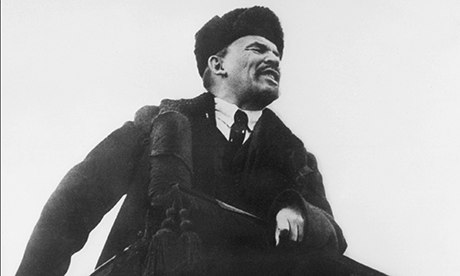
At the beginning of the 1920s, the communists in Russia announced NEP – "New Economic Policy" – making a compromise with the market by leaving it with a large chunk of the production of consumption goods. The planned economy was to the taste of politicians as well as journalists with various political views.
In the period between the two great wars, during which people were shaken by hyperinflation and the Great Crisis, capitalism was commonly viewed as something that meant chaos and the ineffective allocation of creative energy.
Both the radical left and the radical right believed that capitalism created wealth among the few and poverty among the masses and that a planned economy helped to even out income and led to greater solidarity in society.
After the Great Crisis, experiments were carried out with various forms of a planned economy not only in Germany or the Soviet Union but in many European countries, including Poland.
Adam Leszczyński, Gazeta Wyborcza
Adam Leszczyński, Gazeta Wyborcza
Nation states
The year 1918 radically reshaped the map of central and eastern Europe. Several new states (or ones recreated after a century) appeared in the place of three powerful empires – Germany, Russia and Austria-Hungary.
The new countries were poor, in conflict with each other and studiously divided by borders and customs duties. It was the era of triumphant nationalism. Countries such as Ukraine suffered the bad luck of having been unable to successfully fight for their own state because their rivals had proven stronger.
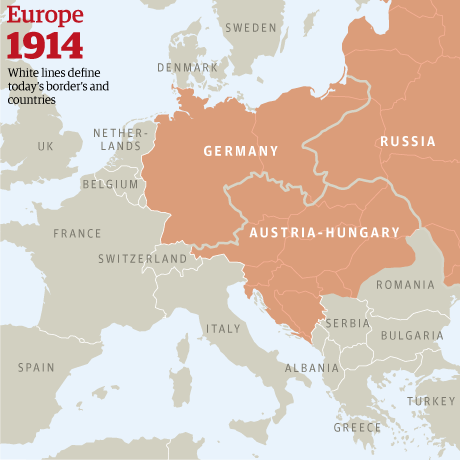
In September 1918, the Austro-Hungarian empire tried to make contact with western powers to ask for a ceasefire. The US, by then the most powerful country in the world and one untouched by the war, replied that its stance had been presented by President Woodrow Wilson in January of that year in his Fourteen Points proposal.
Apart from his postulates of transparent international agreements, unfettered access to the seas and the lifting of trade barriers, Wilson had talked about new borders in Europe based on ethnicity and had also mentioned the rebirth of Poland. As it would later turn out at the Versailles conference in 1919, his postulate of "borders based on ethnicity" would prove to be not only utopian, but also the precursor to many conflicts.
In central Europe, nations often lived side by side with each other and claimed ownership of the same territories. Each resolution passed by the big powers triggered diplomatic protests and, quite often, armed conflict.
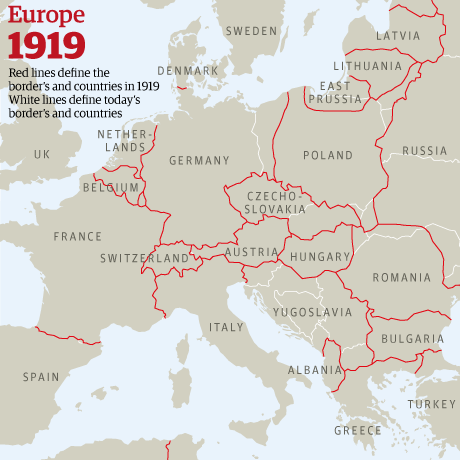
The biggest of the new countries was Poland, which had disappeared from the map for 123 years after being partitioned in 1795. Its territory was reclaimed thanks to armed conflicts with the Germans, Ukrainians, Lithuania, Czechoslovakia and the great battle with Russia. In 1923 when its borders were finally settled, Poland had relatively good relations with only two neighbours – tiny Latvia to the north and a distant Romania to the south. This would soon prove fatal.
And yet the war also produced the League of Nations – the world's first proper attempt at an international peace-keeping organisation. Its successes and existence were shortlived, and it would take another world war for the second iteration, the United Nations, to be born.
Adam Leszczyński, Gazeta Wyborcza
Adam Leszczyński, Gazeta Wyborcza
The "broken faces"
Modern surgery was born in the first world war, where civil and military hospitals acted as theatres of experimental medical intervention. Trench warfare meant that the head and the face were especially exposed to enemy fire. Countless veterans survived the war but paid the price by leaving it maimed, mutilated and disfigured. These were the so-called "broken faces", named after an expression coined in France by colonel Yves Picot, president of the Union des blessés de la face et de la tête, which was founded in 1921.
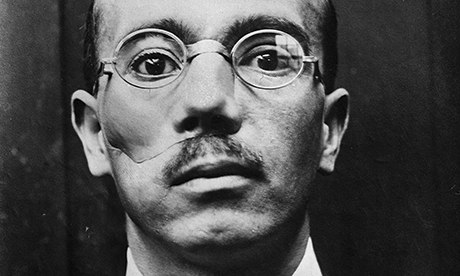
By the end of the first world war there were about 6.5 million war invalids in France. Surgeons from the belligerent countries faced a considerable flood of these "broken faces", and were charged with giving them human features again, to ease the plight of their reintegration into civil life. Missing flesh and bone were covered up with graft, an innovation that came about by using skin from other parts of the body.
Paul Benkimoun, Le Monde
Paul Benkimoun, Le Monde
Blood banks
The discovery in 1914 that blood could be prevented from clotting if mixed with sodium citrate, plus the benefits of refrigeration, were huge breakthroughs that paved the way for blood banking.
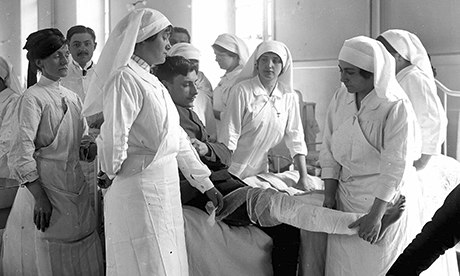
In the second half of the war, medics improvised to use preserved blood at casualty clearing stations, though initial survival rates were not good. Finding donors was not a problem, but overlooking blood groups was. Still, the sudden advances led to a blood donor service being established in London in 1922.
Mark Rice-Oxley, the Guardian
Mark Rice-Oxley, the Guardian
The decline of aristocracy
Those sons of the British upper classes fortunate enough to survive the first world war returned to find a country in a state of flux and their place in it no longer automatically assured.
Their diminished numbers – until late 1917, the upper classes suffered proportionately greater losses in the fighting than any other class – ensured that a resumption of the prewar status quo was physically impossible.
"The apprentices for the postwar were no longer there; they were lying in Flanders Fields," says Joanna Bourke, professor of history at Birkbeck College, London.
"This had a devastating impact: the prime minister's son was killed, a number of cabinet members' sons were killed and this meant that in the immediate postwar, those apprentices who were expected in the natural order of things to become leaders – particularly in politics and business – were no longer there."
But not only were the numbers of the male upper classes severely diminished; there was also a fall in the number of those willing to serve them and their families as they had done for hundreds of years.
Many of the women whom the war effort had forced out of domestic service and into factories found themselves unwilling to relinquish their new independence.
"You get the delegitimisation of the whole structure that maintains upper middle-class life," says Bourke.
"In the past, the servant class in upper middle-class homes were those people whose family tradition was to work there. When someone left, the cook would recommend her niece – and that no longer happened, so there's a real crisis in terms of the labour that's required to keep up these lifestyles."
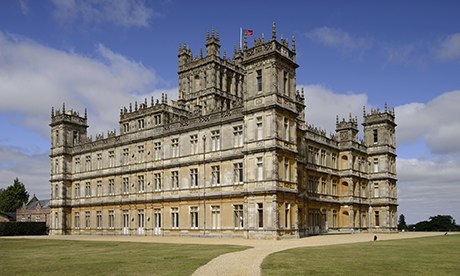
The decline of the upper classes was further hastened by the passing of the Representation of the People's Act in June 1917, which gave the vote to an additional 5 million men and nearly 9 million women.
The extension of the franchise, coupled with an explosion in trade unionism, afforded the working classes greater social representation and with it the freedom to challenge the power of the establishment parties and question the wisdom of those who had sent so many soldiers to their deaths.
But perhaps the greatest harbinger of the decline of the upper classes emerged from the mud and blood of the western front as the institution charged with protecting the traditional British way of life became the unwitting agent of its dissolution.
The introduction of conscription in 1916 turned a professional army into a civilian one and flooded its ranks with middle-class men whose mothers and fathers occupied powerful places in society and used those positions to demand that their children's sacrifices were not in vain. It also led to the rise of new officers from humble backgrounds who, like so many thousands of female Britons at home, were not prepared to abandon the possibility for social advancement that the war had brought them.
As Bourke puts it: "These people came back – some of them with medals – and they weren't going to go back to being shopkeepers."
Sam Jones, the Guardian
Sam Jones, the Guardian
Christian democracy
The catastrophic heights that the first world war provoked drove French politicians and intellectuals to protest "never again".
Marc Sangnier, founder of the Sillon movement at the end of the 19th century, was one of the figures emerging from that rallying cry. This thread of social Christianity extolled a reconciliation of the church and the republic in the name of a third way between capitalism and socialism.
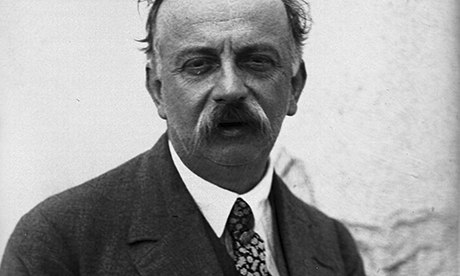
Like his contemporary Jean Jaurès, Sangnier became the sworn enemy of the Catholic monarchists led by Charles Maurras. Sangnier served as a trench engineer during the war. In 1916, the joint prime minister and foreign minister, Aristide Briand, made Sangnier an ultimately unsuccessful peace emissary between the pope and France. Sangnier left the war as a commander and was decorated with the legion of honour and the French Croix de guerre.
From 1919 to 1924, Sangnier was a statesman. His colleagues were sarcastic about his efforts to restore Europe through international collaborations with the likes of Russia and Germany. Only the left and the extreme left applauded this curious Christian for radical pacifism, a visionary who was elected with the moderate right but who the conservatives classified as a "bolshevik Christian". His idea was to organise the "peace for youth" through international democracy. This led to international congresses; the grand finale in Bierville in August 1926 featured more than 5,000 participants from 33 nations, although the majority were Germans.
When Sangnier died in 1950, the ideas he defended lived on in the Christian Democrats who held power in France, Germany and Italy.
Michel Lefèbvre, Le Monde
Michel Lefèbvre, Le Monde
Women's emancipation
Historians still wrangle over whether the war liberated women. Without a doubt, women accomplished a high number of largely masculine roles during the war. Without a doubt, women achieved the most important political rights in certain countries (such as Britain). Without a doubt, some of the fashions, such as the flapper "garçonne" ("little boy") look, evoked an emancipation of the traditional feminine codes. However, in reality women's work was already on the rise before 1914 and once the war was over, many women went back to their old jobs.
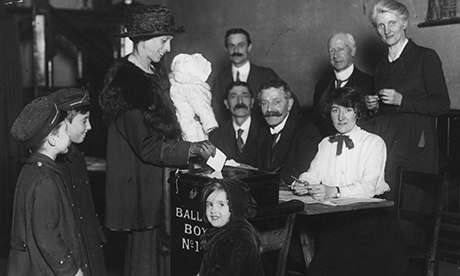
The feminisation of work is limited and depends on what sector it is in. It grows in business, in liberal professions or in banks. In fact, women are denied quite a few rights (in France, women only won the right to vote in 1944. In Germany they could vote as of 1919, in Great Britain from the age of 30 in 1918, and from the age of 21, like men, in 1928). Often the forms of emancipation of traditional roles were socially and quantatively restrictive. Recent works suggest that this period was a transitional phase, a teaser of the evolutions to come.
Nicolas Offenstadt, Le Monde
Nicolas Offenstadt, Le Monde
• This article was amended on 16 January 2014. The earlier version referred to sodium nitrate where sodium citrate was meant.
Please feel free to comment and/or add more information here. Google+
Subscribe to:
Posts (Atom)



